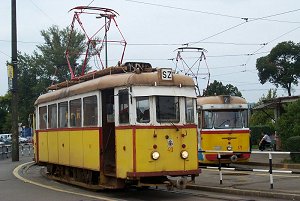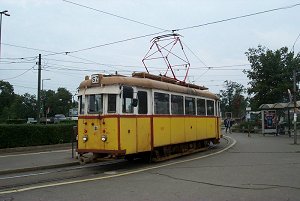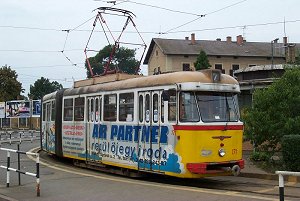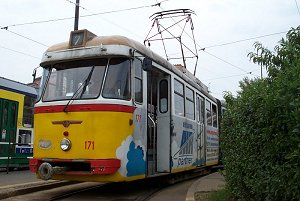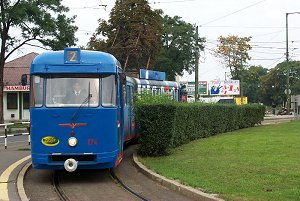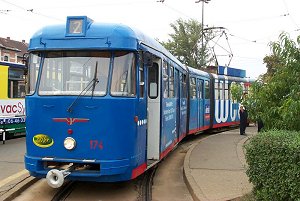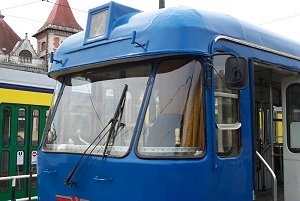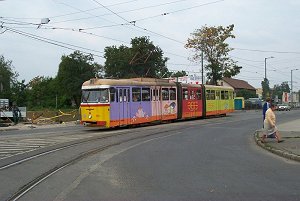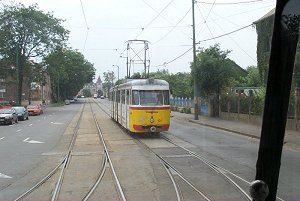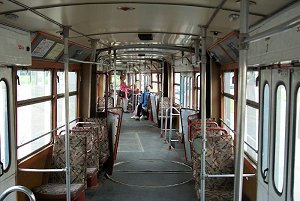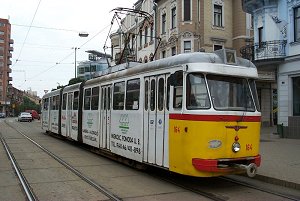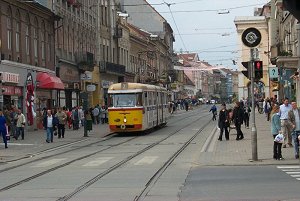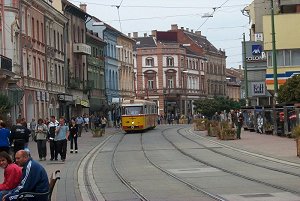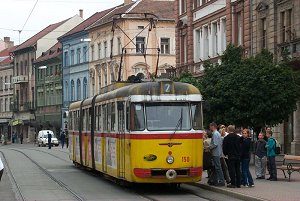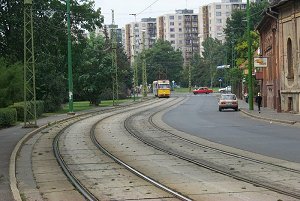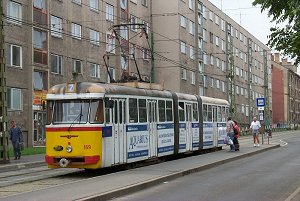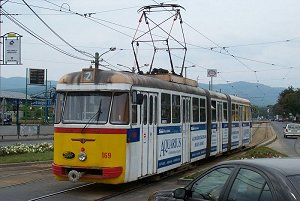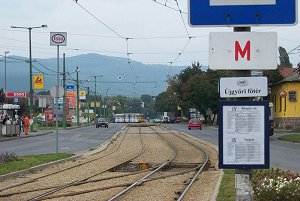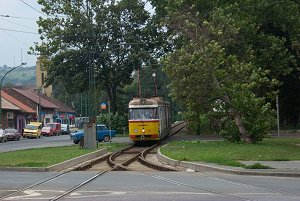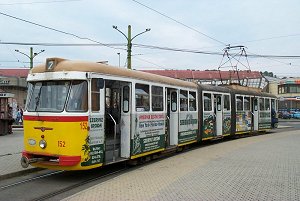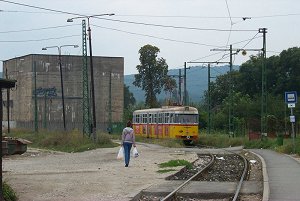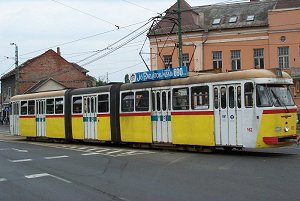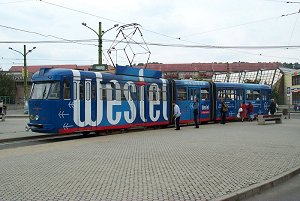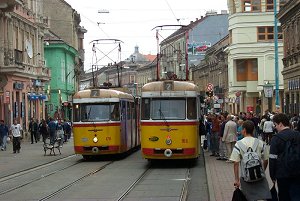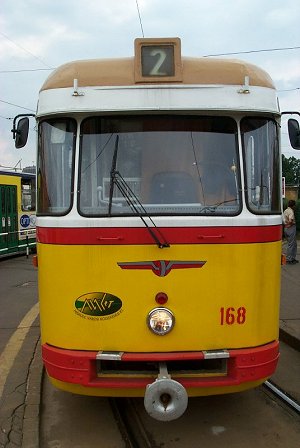Miskolc is the third bigest city in Hungary (with the first being Budapest (2 million inhabitants), the second Debrecen (210,000), and the fourth Szeged (160,000) - these are also the cities in the country with a tram service). It has a long history of public transport railways: the Miskolci Városi Villamos Vasút (MVV - Municipal Electric Railways of Miskolc) opened it first line in 1897, another company, Miskolc-Diósgyőri HÉV Rt. (Miskolc-Diósgyőr Suburban Railways Inc.) started its service in 1906. Services on behalf the second company were done also by the MVV, so there was no real business struggle between them, it's just that this other line was not an urban railway so other laws and regulations (both for taxation and technology) had to be used in its operation. Later the companies were united under a new owner. As for services: there used to be more routes (up to five) crossing the town, but they were closed by the seventies. Only one "tram-corridor" remained, which was serviced by three routes (0, 1, 3) in different (overlapping) sections until 1993. Now only two services remained: route 1 going all the way from Miskolc Tisza railway station to Diósgyőr, and route 2 terminating at a turning loop at Vasgyár ("Iron works" - Miskolc was known for its heavy industry earlier).
The pictures on this page were taken by my friend Mr. Ákos Baracsy, a hardcore "home-made articulated"-fan, so you won't see much of the Tatra KT8D5 cars of Miskolc on this page...
Let's start our round trip with an unusual vehicle! This is service car M40, which was originally built for the Budapest-Budafok HÉV (BBVV) in the 1910's. This is almost the same type as the 1000-series made for BKVT, but they had 1000V traction motors (as used on HÉV services) instead of 500V ones and were painted dark green. Between 1937 and 1951 they were converted to steel-frame vehicles, and two of the vehicles involved have doubled themselves: "steel-frame-izing" in this case meant that a new chassis and body was built with the electric parts (motors, control circuits, plus the air brake system) of the old bodies. This has resulted in two empty "wooden-frame" bodies left, which were later refurbished using new motors and accessoires - now we have four cars instead of two! The "wooden-frame" cars were sold to Miskolc where they served as MKV (Miskolci Közlekedési Vállalat - Miskolc Transportation Company) 78 and 79. In 1958 they were rebuilt using the steel-frame body of the 1000er series: now they looked just like the 1000-series of Budapest. They were renumbered to MKV 40 and 41, so they were now considered part of the 40-series. Originally there were 13 cars in the 40-series of Miskolc vehicles, some of them were sold to Szeged in the eighties, others were scrapped. One of the old Budapest-Budafok HÉV cars has survived though, as you can see above, and it's still used for maintenance works.
Of course now it doesn't look like the 1000ers of Budapest, because of the two headlights instead of one... It also has a big door in the middle on one side.
Back to the more usual trams: "home-made" articulated MKV 171. Believe or not, this car was built in 1977 - although its characteristics have got more to do with a tram from the 1930's...
From another perspective.
The terminus at Tiszai pályaudvar (Tisza railway station) has a two-track turning loop, you can see a Tatra KT8D5 articulated tram in the background on the other track.
174 is the youngest "Bengalis" (nickname of the "home-made" articulated) in Miskolc, it's been built in 1978.
These days the old articulated trams are only used on service 2, while route 1 is served with the Tatras.
The windshield of a Bengali.
Number 170 advertising for a mobile telephone company.
Number 164 in Baross Gábor utca. The tracks in the left lower corner are coming from the unified tram and bus depot of the MKV. You can also see the main building of the Tiszai pályaudvar in the background.
Interior of a Bengali.
Number 164 at Szinvapark.
Széchenyi utca, the main street of Miskolc.
Ditto.
Ditto.
Number 170 with a Tatra at Városháza tér.
Number 150 is an old articulated car, it has been built in 1973.
162 near Zenepalota (Music Hall).
Passing by at a park...
169 at Malomszög utca.
169 at Újgyőri főtér.
Tram in the distance, seen from Újgyőri főtér...
152 in Vasgyári utca...
Number 152.
In the bend.
Tram in an... eeer... industrial environment.
162 at Ady-híd.
Number 174 with its full-body advertisement (again for a mobile phone company).
170 and 168.
Number 168 seen from the front side. It's hard to believe that the look of this tram was designed the same gentleman who did the Ganz articulated (and who emigrated to Aachen, West-Germany afterwards)! They don't have anything in common...
Many thanks to Mr. Attila Perlaki for a few remarks about the pictures!
